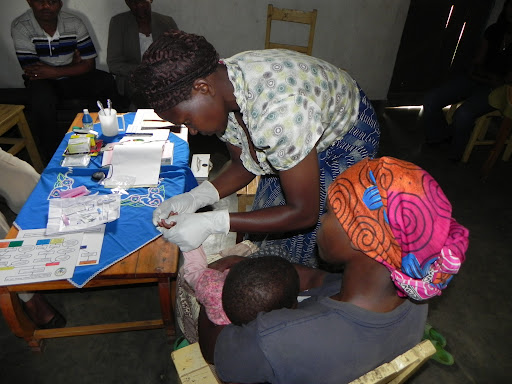The Water, Sanitation, and Hygiene (WASH) sector plays a pivotal role in ensuring the well-being of communities around the world. However, the sector faces numerous challenges that hinder its potential to provide universal access to clean water, adequate sanitation, and hygiene practices.
Despite these obstacles, the WASH sector also presents several opportunities for transformative change, making it a vital area for global investment and innovation.
Challenges in WASH
Water Scarcity and Accessibility
Access to clean and safe drinking water remains a significant challenge in many parts of the world. Climate change, over-extraction of water resources, and population growth have strained water availability, particularly in regions like sub-Saharan Africa and parts of South Asia. Many communities rely on unsafe sources of water, exposing them to diseases like cholera and dysentery.
Testimony:
“In our village, we have to walk miles every day to collect water from a stream that is often contaminated. Even though we boil it before use, we still get sick from time to time. It’s a constant struggle to stay healthy,” says Zainab, a resident of a rural village in northern Nigeria.
Poor Sanitation Facilities
Millions of people still lack access to proper sanitation, contributing to open defecation, unsanitary living conditions, and the spread of diseases. In many areas, the infrastructure for waste management is either inadequate or non-existent. Improper disposal of waste, particularly in densely populated urban areas, exacerbates the problem.
Testimony:
“We don’t have a proper toilet in our community. Most people use the bushes or the streets, and it’s a real health hazard, especially during the rainy season when everything gets washed into the river,” explains Suresh, a community leader in rural India.
Inadequate Hygiene Education
Even when water and sanitation infrastructure are available, improper hygiene practices can undermine health outcomes. Lack of awareness about proper handwashing, safe food preparation, and maintaining clean living spaces continues to be a barrier to improving public health.
Testimony:
“I used to think washing hands with just water was enough, but after a hygiene campaign in our school, I learned that soap is essential. It makes a huge difference, especially in preventing diseases like diarrhea,” says Amina, a young girl from rural Ghana.
Gender Disparities
Women and girls are disproportionately affected by WASH challenges. In many parts of the world, women are primarily responsible for water collection, and the lack of accessible sanitation facilities puts their health and safety at risk. Additionally, girls are often forced to miss school due to menstruation and lack of menstrual hygiene management options.
Testimony:
“I would miss school every month because there was no proper place for me to manage my menstrual cycle. I would stay home to avoid embarrassment, which affected my education,” shares Mary, a teenage girl from a community in Kenya.
Opportunities for Transformation
Innovative Water Solutions
Advancements in technology have paved the way for more sustainable and efficient water management solutions. Solar-powered water pumps, rainwater harvesting systems, and low-cost filtration technologies are helping communities access clean water in remote areas.
Testimony:
“The installation of solar-powered water pumps in our village has been a game-changer. We no longer have to walk long distances, and the water is clean and safe for our families,” says Hassan, a farmer in Ethiopia.
Improved Sanitation Technologies
There has been significant progress in the development of cost-effective and sustainable sanitation solutions, such as ecological toilets and decentralized waste treatment systems. These innovations are helping to address sanitation needs in underserved communities while minimizing environmental impacts.
Testimony:
“The new ecological toilet systems introduced in our community have reduced the risk of disease outbreaks. They are easy to use and maintain, and they’re much better for the environment,” says Fatima, a mother of three from Morocco.
Community-Led Approaches
Empowering local communities to take ownership of their WASH solutions is one of the most effective ways to ensure sustainability. Community-driven programs that promote local leadership, training, and resource management are proving to be successful in creating lasting change.
Testimony:
“When we were trained to build and manage our own water system, we felt more in control. Now, we have a reliable source of clean water, and everyone is involved in keeping it running,” says Jamal, a local leader from a village in Bangladesh.
Policy and Global Collaboration
Governments and international organizations are increasingly recognizing the importance of WASH in achieving the United Nations Sustainable Development Goals (SDGs). Through policies that promote inclusive water and sanitation infrastructure, alongside global partnerships for financing and knowledge-sharing, there is a greater opportunity to address these challenges at scale.
Testimony:
“The government’s recent investment in building sanitation facilities has transformed our community. It’s clear that when policymakers prioritize WASH, the impact is enormous,” says Sophia, a community member from rural Uganda.
The challenges facing the WASH sector are undeniable, but they also present an opportunity for innovation, collaboration, and lasting change. By addressing the root causes of water scarcity, poor sanitation, and inadequate hygiene, and by empowering communities with the tools and knowledge they need, we can create a world where everyone has access to clean water, safe sanitation, and proper hygiene.
The testimonies of individuals on the frontlines highlight the resilience of communities and the transformative potential of sustainable WASH solutions. The time to act is now, for the health and future of millions.
BY NIKUZE NKUSI Diane





